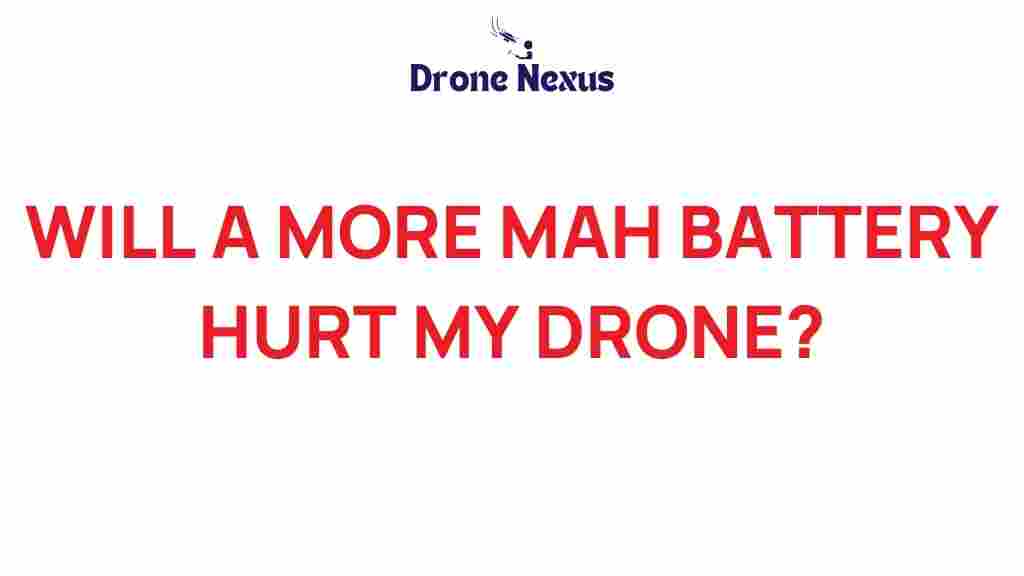Can a Higher mAh Battery Boost Your Drone’s Performance?
When it comes to enhancing the performance of your drone, one of the most critical components to consider is the **drone battery**. The capacity of a drone battery is measured in milliamp hours (mAh). A higher mAh rating indicates a greater capacity for energy storage, which can directly influence flight time, stability, and overall performance. In this article, we’ll explore how a higher mAh battery can boost your drone’s performance, the benefits and limitations of upgrading, and troubleshooting tips for maximizing your drone experience.
Understanding Drone Batteries
Before delving into the specifics of mAh ratings, it’s essential to understand the different types of batteries commonly used in drones:
- Lithium Polymer (LiPo): The most popular battery type for drones due to their high energy density and lightweight structure.
- Lithium-Ion (Li-Ion): Offers a longer lifespan but is generally heavier and less powerful than LiPo batteries.
- Nickel-Metal Hydride (NiMH): Less common in drones but still used in some models; they are heavier and have lower energy density.
Most hobbyist and professional drones utilize LiPo batteries, making them the primary focus of this article. The mAh rating of a **drone battery** is crucial because it determines how long the drone can fly before needing a recharge.
How Higher mAh Ratings Affect Drone Performance
Upgrading to a higher mAh battery can significantly enhance your drone’s performance in several ways:
- Increased Flight Time: A higher mAh rating means more stored energy, which translates to longer flight durations. For instance, a drone equipped with a 3000mAh battery can fly longer than one with a 2200mAh battery, allowing for extended aerial photography sessions or longer exploration flights.
- Improved Stability: Drones with higher capacity batteries can maintain stable flight even during demanding maneuvers or in windy conditions, as they have more power to stabilize themselves.
- Enhanced Payload Capacity: More powerful batteries can handle additional weight, enabling you to carry extra equipment like cameras or sensors without compromising flight performance.
- Better Performance Under Load: When flying with additional gear or during acrobatic moves, a higher capacity battery ensures the drone has sufficient power to perform optimally.
Choosing the Right mAh Battery for Your Drone
While opting for a higher mAh battery may seem like a straightforward decision, there are several factors to consider:
- Drone Specifications: Always check your drone’s specifications to determine the maximum battery capacity it can handle. Installing a battery with too high of a capacity may cause damage or unsafe flight conditions.
- Weight Considerations: Higher mAh batteries tend to be heavier. Ensure that the extra weight does not exceed the drone’s payload capacity, which could negatively impact flight performance.
- Charging Time: Higher capacity batteries may take longer to charge. If you plan to fly frequently, consider how this affects your flying schedule.
- Flight Goals: If you need longer flight times for specific tasks, such as aerial surveys or videography, investing in a higher mAh battery could be worthwhile.
Step-by-Step Guide to Upgrading Your Drone Battery
If you’ve decided to upgrade to a higher mAh battery for your drone, here’s a step-by-step guide:
- Research Compatible Batteries: Check your drone’s manual or manufacturer’s website for compatible battery options with higher mAh ratings.
- Purchase Quality Batteries: Invest in reputable brands for your **drone battery**. High-quality batteries are more reliable and will enhance performance.
- Prepare Your Drone: Ensure your drone is powered off and remove the existing battery carefully.
- Install the New Battery: Insert the new higher mAh battery, ensuring proper connections are made securely.
- Test Flight: Conduct a test flight in a safe environment to assess performance changes and ensure stability.
- Monitor Battery Health: Check the battery’s performance over time, including charging cycles and flight times.
Troubleshooting Tips for Your Drone Battery
Even after upgrading, you may encounter issues with your **drone battery**. Here are some troubleshooting tips:
- Inconsistent Flight Times: If flight times vary significantly, check for battery health and ensure you are not overloading the drone.
- Overheating: If the battery becomes excessively hot during use or charging, discontinue use and consult the manufacturer.
- Short Charging Times: If your battery charges unusually quickly, it may indicate a problem. Always use the recommended charger.
- Check Connections: Ensure that all connections are tight and free of corrosion. Loose connections can lead to power loss.
Conclusion
In conclusion, upgrading to a higher mAh battery can indeed boost your drone’s performance significantly. With benefits such as increased flight times, improved stability, and enhanced payload capacity, a higher capacity **drone battery** is a worthwhile investment for serious drone enthusiasts. However, it’s essential to choose the right battery that fits your drone’s specifications, considering factors like weight and charging time. By following the tips provided and troubleshooting any potential issues, you can maximize your drone’s performance and enjoy longer, more productive flights.
For more information on drone batteries and maintenance tips, visit our drone battery maintenance guide. To learn more about the latest advancements in drone technology, check out this external resource.
This article is in the category Technology and created by DroneNexus Team
